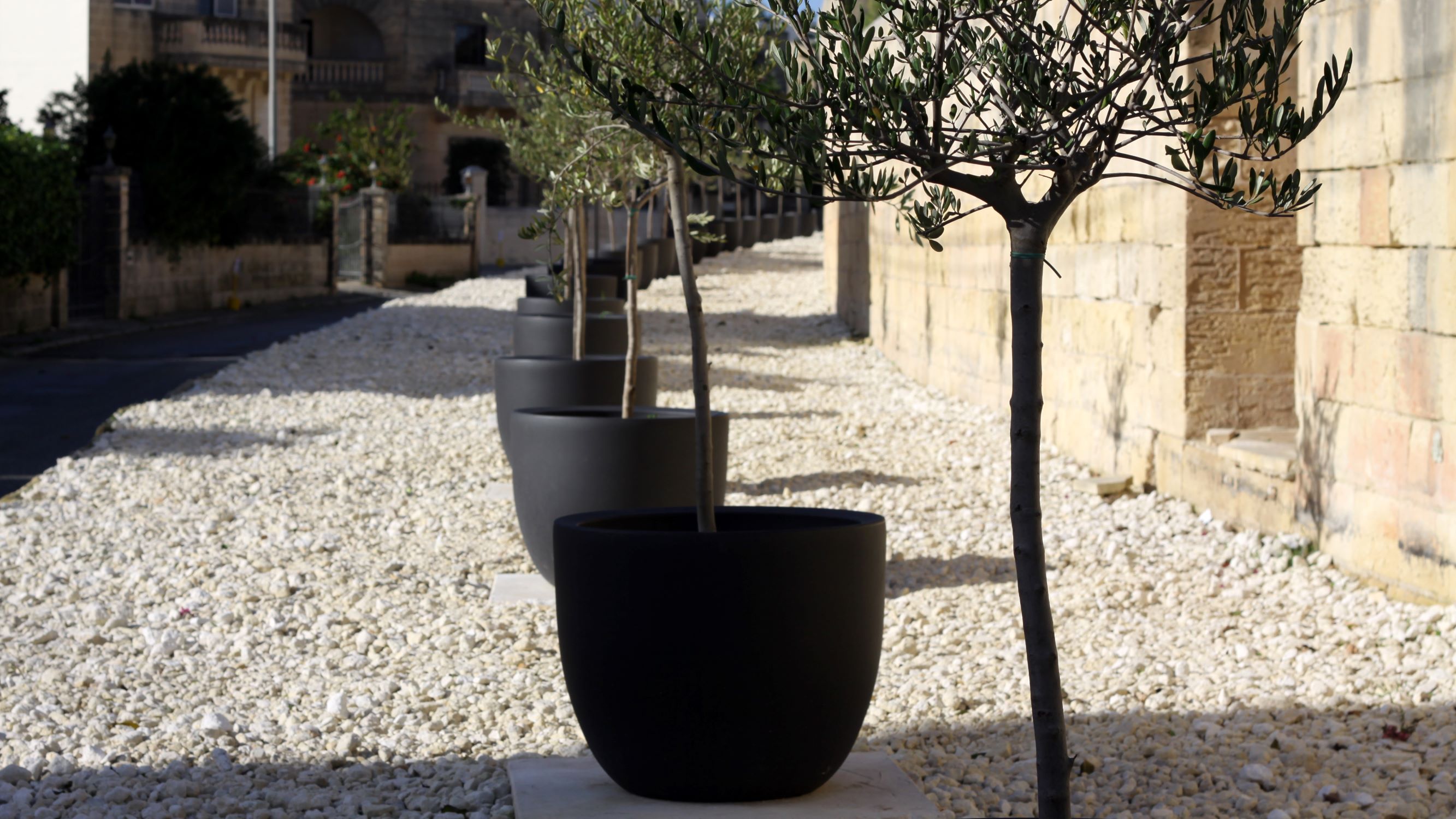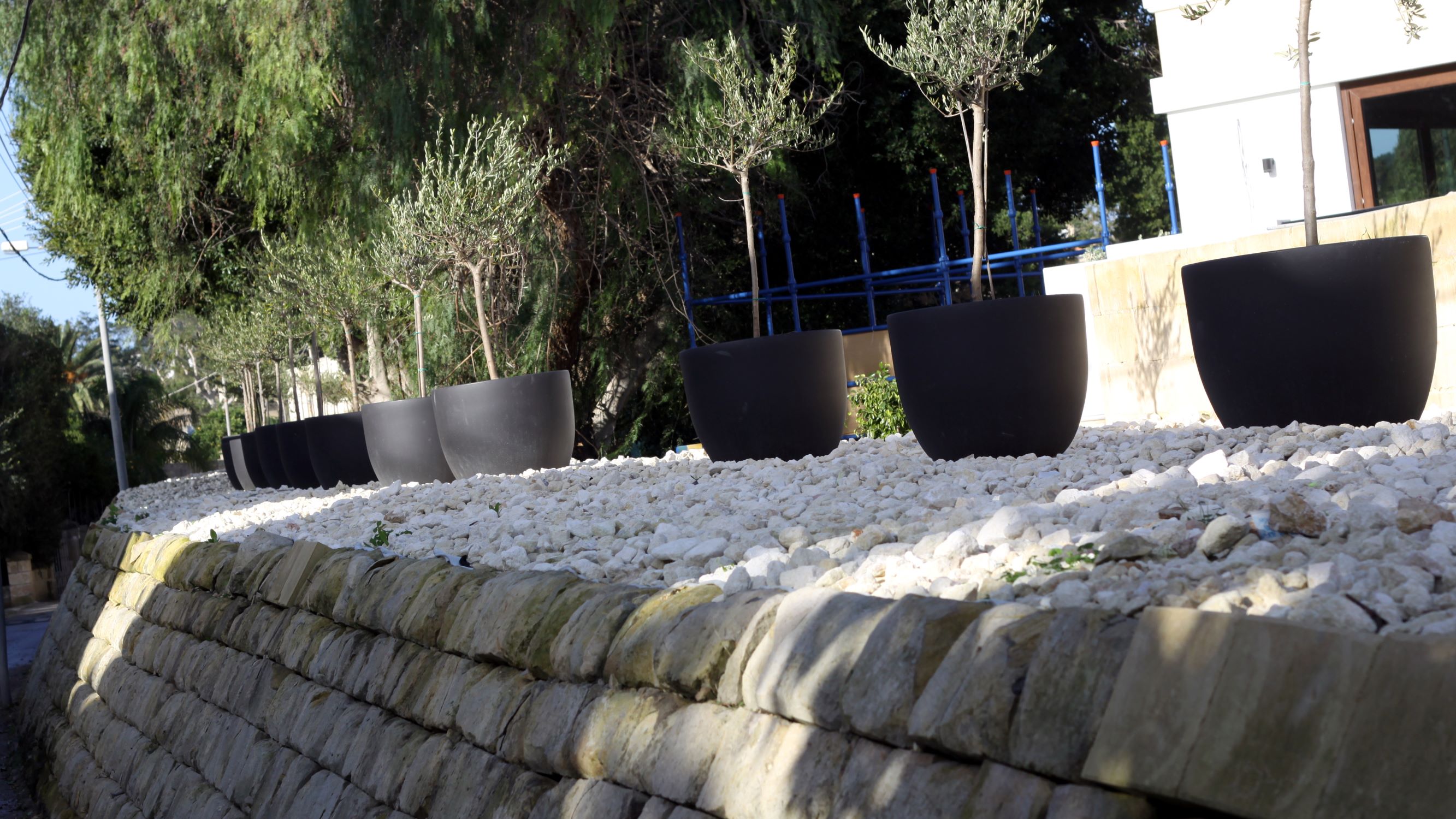

110 new olive trees for Attard’s historic railway embankment
As part of its ongoing urban greening programme, Infrastructure Malta planted 110 olive trees along the newly restored embankment of the old Maltese railway, in Attard.
This initiative was coordinated in collaboration with the Attard Local Council, which has recently completed an EU-funded project to restore this historic structure, extending almost 400 metres in Attard, close to the San Anton Gardens. Infrastructure Malta placed the new olive trees in weather-resistant, recyclable planters along the embankment, where the rail tracks and sleepers once stood. The trees were not planted directly in the ground to avoid root damage to the embankment walls.

The Maltese railway, which extended from Valletta to Mtarfa, operated between 1883 and 1931. The Attard embankment is the last remaining railway structure of its kind in Malta. It will now form part of a walking heritage trail, extending from Attard’s L-Istazzjon (Maltese for “station”) Garden, where the Attard station used to be before it was demolished during World War II, to one of the few surviving station buildings in Birkirkara, in another public garden also named L-Istazzjon.
The Birkirkara station is currently being transformed into a railway museum by the Malta Railway Foundation. Meanwhile, at the site of the Attard station, the Local Council is planning a new Tourism Cultural and Educational Centre. This Centre abuts the shorter arm of the railway embankment and will be built on the same footprint of the original train station.
The heritage trail will also include Old Railway Road, a long residential road extending from the embankment area, through Balzan, towards Birkirkara’s L-Istazzjon Garden. Infrastructure Malta rebuilt this street and its footpaths a few months ago, as part of the ongoing nationwide €700-million, seven-year investment in the upgrading of Malta’s residential roads.

Earlier this year, Infrastructure Malta launched a €1 million plus investment to plant over 6,700 indigenous trees in different locations across the Island. Through this programme, the agency is currently collaborating with non-governmental organisations, local councils and other entities to plant new trees in over 44 different locations in Malta. Thousands of indigenous trees have already been planted in many roadside locations, in other urban areas and in the countryside. Arborists and other environmental experts and authorities are selecting the tree species for each site and guiding the tree planting works to make sure that they can easily adapt to, and enrich, the surrounding ecosystems.
The agency’s contractors will continue watering and taking care of the trees planted as part of this programme for several years, until they confirm that they are established in their new environment. If any of the trees are damaged or do not survive, Infrastructure Malta will replace them.
Infrastructure Malta is committed to maintain this investment in the coming years to ensure that the unavoidable adverse impacts of developing better quality infrastructure in the Maltese Islands are not only mitigated but turned into new opportunities for a greener environment for future generations.


